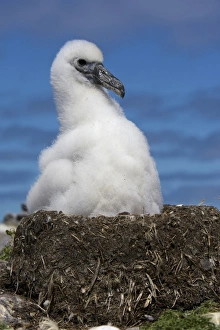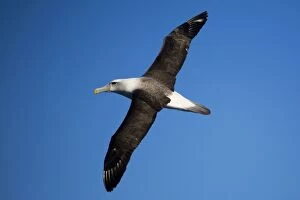Thalassarche Cauta Collection
The Thalassarche cauta, also known as the Shy Albatross, is a magnificent seabird that can be found in various locations around the world. In Picture No
All Professionally Made to Order for Quick Shipping
The Thalassarche cauta, also known as the Shy Albatross, is a magnificent seabird that can be found in various locations around the world. In Picture No. 12020740, we are presented with a captivating image of this species in flight. The Wandering Albatross and Shy Albatross, Diomedea exulans and Thalassarche cauta respectively, share some similarities but also have distinct characteristics that set them apart. The immature Shy Albatross captured in flight showcases its impressive wingspan and graceful movements against the backdrop of South Africa's scenic beauty. As we observe these images of the immature Shy Albatross soaring through the sky, it becomes evident why they are often referred to as "majestic wanderers. " Their ability to effortlessly glide through the air is truly awe-inspiring. Not only do these albatrosses excel in flight, but they are equally at home in the water. The series of pictures depicting Thalassarche cauta swimming gracefully in the sea highlights their adaptability and versatility as marine creatures. Australia's Bass Strait serves as a vital habitat for these remarkable birds. In one photograph from Tasmania's Bass Strait region, we see a striking portrait of a Shy Albatross up close. Its distinctive features become more apparent - from its elegant white plumage to its expressive eyes. Another snapshot captures a pair of Shy Albatross on their nest – an intimate glimpse into their family life and breeding habits. These moments remind us of how important it is to protect their habitats and ensure their continued existence for future generations to appreciate. Thalassarche cauta or the Shy Albatross captivates us with its aerial prowess and aquatic gracefulness. Through these photographs taken across different locations such as South Africa and Australia's Bass Strait region, we gain insight into this remarkable species and the need to preserve their natural habitats.







